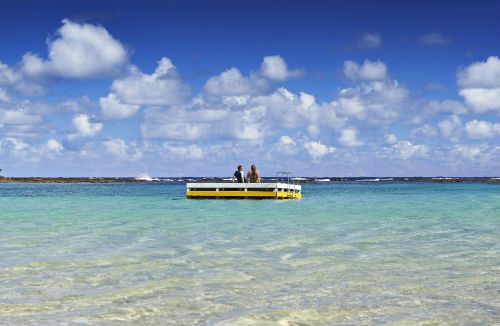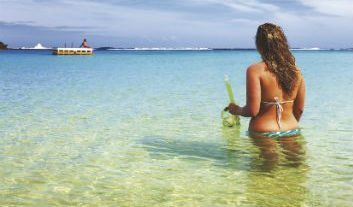A special island in the sun, Norfolk is full of surprises
I strolled along the grassy verge of Quality Row and entered an elegant home, a fine example of colonial, Georgian architecture. This is one of the homes that was constructed in Kingston in 1844 on Norfolk Island. Built during the infamous ‘second settlement’ when the island was home to gangs of brutalised convicts, the houses almost seem modern in their simple design and wide verandahs.
Quality Row (or Military Road as it was known then) was where military lived alongside civil officers, clergy and their families. The posh end of the island.
The extraordinary, atmospheric ruins and the well-preserved homes and utility buildings in Kingston (World Heritage-listed) are home to ghosts of the past. And being Norfolk Island, this well-represented era is just one layer of Norfolk’s intriguing history.
Just a couple of hours flight north east from Sydney, Norfolk is a pristine, small island of 3455h perched in the Pacific Ocean.
Although Norfolk is compact, it sprawls, whichever way you look at it. It has a magnificent coastline, with sandy beaches, steep rugged cliffs and glorious bays with lagoons that thumb their noses to the often wild waves that slam the shore.
The locals (humans and others) are the friendliest bunch you can imagine.
“Holy cow!” I thought as I saw cows break away from a herd and cross the road, while others nonchalantly chewed on the succulent grass, oblivious of the hold-ups they were causing the traffic.
Les Quintal, our guide on the orientation drive around Norfolk Island, said: ‘this is their right’. The farmers have grazing rights to the roadside pastures so cows have right of way – and they know it! It’s not surprising to also see cars give way to chickens, ducks and geese crossing the road.
As I meander through the ruins of the convict buildings, the history is all too apparent.
While some have been restored and are in use as museums, homes and government facilities, the roofless constructions are exposed to the elements.Queen Victoria granted the island to the descendants (Pitcairners) of the original mutineers from Captain Bligh’s ill-fated voyage on the Bounty. Hence the name of our guide: Quintal. The ghosts of the past are still very much alive among today’s living!
Today the island has calmed the ghosts and there’s much fun to be had – and Norfolk has a host of annual festivals from gardening, to line-dancing and country music, to jazz – to yoga . . .

Norfolk Island has a surprising number of things to do for such a small place, including:
- Scenic views from the top of Mt Pitt and Captain Cook’s Lookout;
- the ‘grand Gothic-style’ St Barnabas Chapel with its Frances Greenway stained glass windows;
- a walk and marvel at Cyclorama, the 360-degree giant panoramic painting that follows the story of the Bounty and its crew.
Norfolk Island is peppered with amazing dining experiences at more than 35 restaurants and cafes. You can try lots of dishes featuring local produce including beef, cheeses, honey, fruits, vegetables and coffee – and call into the island’s only winery for a tasting of their whites
and reds.
Driving is stress-free (except for the cows), with hardly any traffic, one roundabout, no traffic lights, a 50km speed limit (30km in school zones), and you must practise your ‘Norfolk wave’ by acknowledging the passing driver with the gentle lift of the hand or one finger.
Roads have quaint names – Poverty Row, Puppies Point, Cats Lane; phone numbers are five digits long and the residents are listed in the telephone book by their nicknames. The special Norf’k language, a lilting blend of Tahitian and Old English is spoken by everyone here.
Take your passport, there are no long queues at customs and the friendly officials will greet you with a beaming smile! And your favourite barista may turn out to be a customs office – job sharing is the go here. ‘Yorlyi cum look orn’ – Come and have a look.
For more information about Norfolk Island, visit norfolkisland.com.au.
